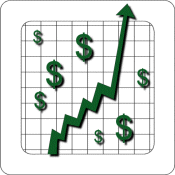HISTORY OF RETAIL FOREX
Forex has been trading since the beginning of financial markets, whereas retail trading started at about 1996. Before the internet era of 1996, retail investors were limited in their method for trading the Forex market. One option was to create multiple bank accounts with different currency, and transfer funds from one account to another in order to profit from fluctuating exchange rate. This troublesome method incurred high transaction cost due to the small quantity of funds compare to the size of the market.
The development of web-based technology in 1996 created a new group of market makers who took advantage of the internet-based trading and make it more practical. These emerging groups of market makers took the opposite side of retail traders' trades. Online trading platforms were created by these companies by pooling many retail traders together. Individual who did not have access to Forex spot market can buy and sell easily through the internet platform. By increasing the numbers of retail traders, the companies manage to reduce the amount of spread. As the business grew, better spreads were given to the customers.
THE CONCEPT OF LEVERAGE
Leverage is probably one of the most attractive reason why retailers choose Forex (including me). I will briefly explain the calculation of leverage. Suppose a broker offer you 100:1 leverage for your account. You have $2000 and you wish to trade EUR/USD, it is four decimal place base on EUR/USD (0.0000) The maximum amount you can trade is $2000 x 100 x 0.0001 pip = $20 per pip. Lets say another broker offer 50:1 lverage. $2000 x 50 x 0.0001 pip = $10 per pip
The calculation is different for Japanese Yen because it is traded at two decimal place USD/JPY (0.00) High leverage can act as an double edge sword. If you are right on the trade, your account could gain 100% return in just a few days, but if you are wrong... your account could be wipe out. Therefore a strict stop loss rules should be included for all trades.
Forex has been trading since the beginning of financial markets, whereas retail trading started at about 1996. Before the internet era of 1996, retail investors were limited in their method for trading the Forex market. One option was to create multiple bank accounts with different currency, and transfer funds from one account to another in order to profit from fluctuating exchange rate. This troublesome method incurred high transaction cost due to the small quantity of funds compare to the size of the market.
The development of web-based technology in 1996 created a new group of market makers who took advantage of the internet-based trading and make it more practical. These emerging groups of market makers took the opposite side of retail traders' trades. Online trading platforms were created by these companies by pooling many retail traders together. Individual who did not have access to Forex spot market can buy and sell easily through the internet platform. By increasing the numbers of retail traders, the companies manage to reduce the amount of spread. As the business grew, better spreads were given to the customers.
THE CONCEPT OF LEVERAGE
Leverage is probably one of the most attractive reason why retailers choose Forex (including me). I will briefly explain the calculation of leverage. Suppose a broker offer you 100:1 leverage for your account. You have $2000 and you wish to trade EUR/USD, it is four decimal place base on EUR/USD (0.0000) The maximum amount you can trade is $2000 x 100 x 0.0001 pip = $20 per pip. Lets say another broker offer 50:1 lverage. $2000 x 50 x 0.0001 pip = $10 per pip
The calculation is different for Japanese Yen because it is traded at two decimal place USD/JPY (0.00) High leverage can act as an double edge sword. If you are right on the trade, your account could gain 100% return in just a few days, but if you are wrong... your account could be wipe out. Therefore a strict stop loss rules should be included for all trades.
